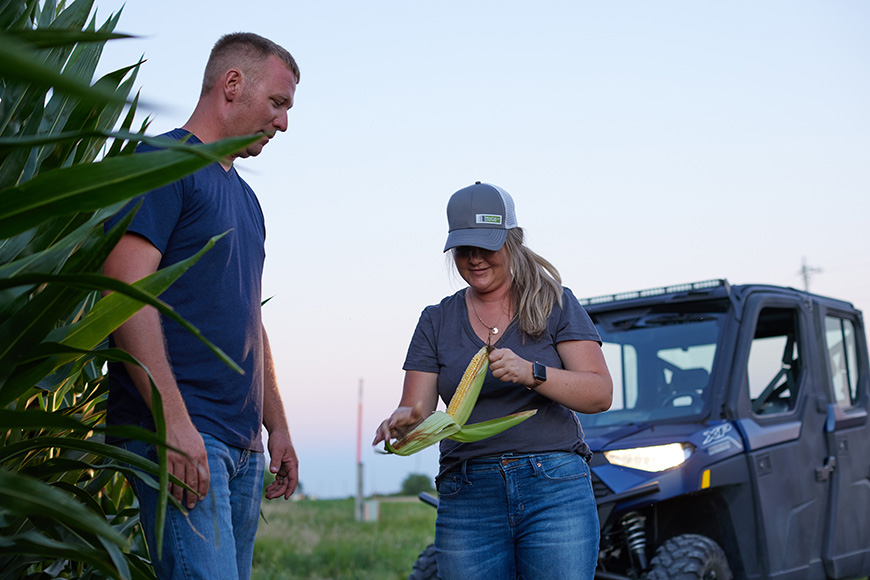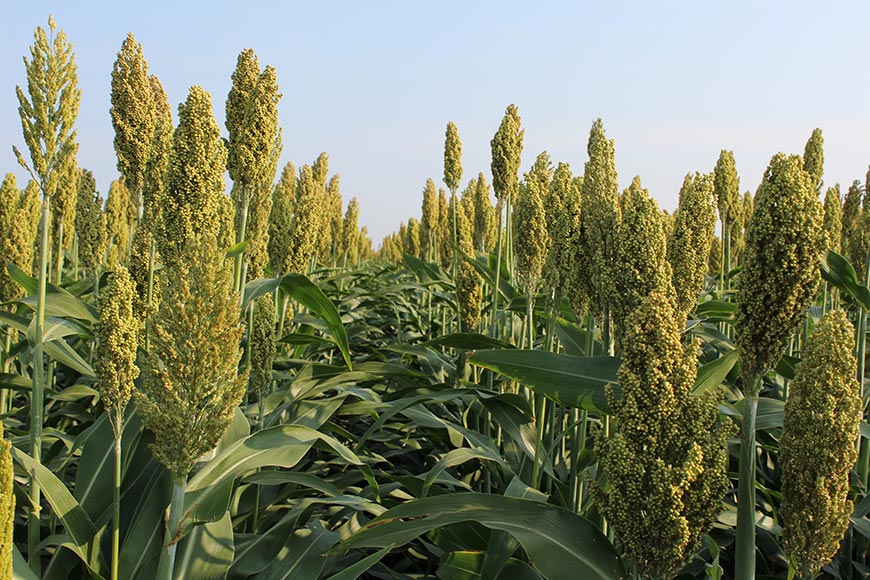6 Ways to Help Maximize Your Corn Yields
Randy Brown, Ph.D.
Market Development Agronomist Lead

It’s what we’re all shooting for each season: maximum corn yields for maximum return. But it doesn’t come from one good decision or one silver bullet product. It’s the culmination of every decision you make from strategic planning to harvest and beyond. Not everything in farming is within your control, but a good portion of it is. Let’s explore six key strategies to help unlock the full potential of your corn acres.
-
Set Field-Specific Plans
Before the season even starts, begin by assessing individual fields to determine their yield potential and identify any limiting factors. Ask yourself key questions: Could my drainage be improved? How about my fertility plan or weed control? Identifying areas for improvement is key in setting realistic yield goals and laying a solid foundation for the season ahead.
When pushing for top-end yields, there's can be risk of spending on inputs that underperform. This is why understanding what each field needs and picking the right inputs can help you avoid wasting resources and maximizing your investment.
-
Be Strategic With Your Seed Selection
Seed selection remains critical as it is not a one size fits all approach. Rather than simply choosing yield winners, thorough data analysis is needed to determine what genetics are best suited for your local area and field conditions.
Utilizing tools like CHT charts, response-to scores , response-to fungicide (RTF)and response-to nitrogen (RTN) scores can assist in this selection process. RTF and RTN scores are proprietary to CROPLAN® seed and can help you get more accurate and efficient with your nutrition and fungicide plans. They also provide valuable insights into hybrid performance. Genetics with high RTN/RTF scores typically indicate high yield potential, where management practices play a significant role in achieving maximum performance.
The four key components of yield are plants per acre, ears per plant, kernels per ear and kernel depth and density. Since kernel depth and density are determined later in the season, it’s essential to continue managing performance through those later stages of growth. For example, having sufficient nitrogen available late in the season is critical for kernel development. There are also biological products available that help move nitrogen and sugars to the ear, which is necessary to complete kernel development.
Mother Nature can never fully be predicted, which is another reason genetic selection continues to be so important. Choosing resilient genetics can help you deal with unpredictable weather and environmental challenges.
-
Don’t Cut Corners On Crop Protection
One of the most common mistakes I see growers making each season is not getting their weed control out early enough. There are a lot of highly resistant weeds out there, so waiting too long for post-emergence application or using inadequate pre-emergence herbicides allows weeds to compete with crops, leading to yield losses down the line.
Regular field monitoring can help detect weed and insect pressures early on. Make it a priority to scout your fields, particularly during crucial growth stages, to keep tabs on disease and insect populations and avoid potential yield losses. Considering past insect or weed issues can also provide valuable insights and help you predict the challenges you might encounter this season.
-
Maximize In-Season Fertility Management
Prioritize soil fertility management throughout the season to support optimal crop performance. Before planting, you can establish a baseline by conducting a thorough soil test. Once you understand the levels of macronutrients, secondary nutrients and micronutrients, you can develop a tailored plan.
For in-season management, utilizing tools like tissue testing can help you make real-time, data-backed decisions. It allows you to see what is making it into the plant so you can make informed decisions on how to improve your crop’s nutrient supply.
Begin tissue sampling around the V5 stage to detect any deficiencies early on. By the time you can visibly see signs of deficiency, you’ve probably already lost yield, but there is still time to act. When applying foliar micronutrients, choose a product and/or tank-mix partners that will help ensure effective uptake by the plant. Since leaves are designed to keep substances out, it's important to use chemistry that facilitates maximum absorption to optimize nutrient availability.
-
Consider Answer Plot® Research
Answer Plot data is unique to WinField United, and we are able to use it to identify great genetics, but also how to manage those genetics. By working with your retailer, you can leverage those valuable insights and get data-backed recommendations to elevate the potential yield of your corn crops.
We have tested emerging technologies that can also be helpful such as aerial imaging, sensor technology and drones that can provide valuable insights into crop growth, development and stress levels, allowing for more informed decision-making.
-
Prioritize Post-Harvest Practices
A lot of times in agriculture, when we pull the combine out of the field, we think we’re done, but post-harvest is actually a critical time for farm management. It's when we need to focus on planning for next year’s crop. Evaluate what went well and what didn’t go well this last year, and is an opportunity to prepare the soil for the next growing season and creating an optimal seed bed by managing tillage and compaction. This is also a good time to evaluate soil nutrients and determine whether you need to build fertility to prepare for spring.
By utilizing these tips and partnering with your local CROPLAN retailer, you can help enhance your hybrids’ chances of success this season.
© 2025 WinField United. Important: Before use always read and follow label instructions. Crop performance is dependent on several factors many of which are beyond the control of WinField United, including without limitation, soil type, pest pressures, agronomic practices and weather conditions. Growers are encouraged to consider data from multiple locations, over multiple years and to be mindful of how such agronomic conditions could impact results. Answer Plot and CROPLAN are trademarks of WinField United.
IF YOU LOVE OUR INSIGHT, YOU’LL LOVE OUR ROI POTENTIAL
Every successful harvest starts with a seed. It just can't end there. Choose which high-performing seed products you’ll start with this season.






